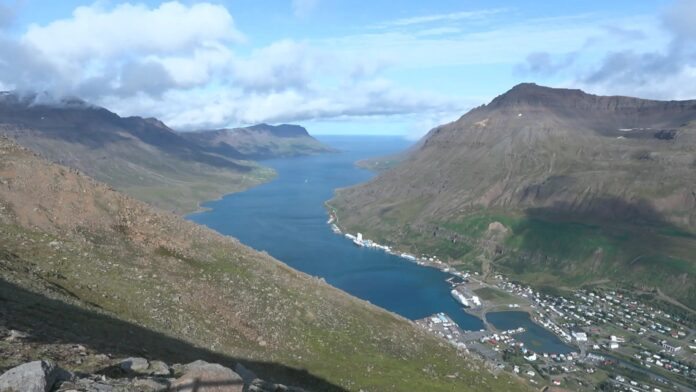Kaldvík’s planned salmon farming cages in Seyðisfjörður overlap with property boundaries and the company has applied for a new location. This came to light after the spring tide shoreline and thereby the property boundaries were measured.
The salmon farming company Kaldvík withdrew its application for a building permit for controversial sea cages in Seyðisfjörður, and then reapplied, once it became clear that the cages with their anchors would be too close to land. A measurement of the spring tide shoreline in the fjord revealed that the planned cages would extend into property boundaries.
Property boundaries extend 115 metres out from land where it is steep-to [a shoreline where the seabed drops away very sharply right from the edge of the land], and there the landowner has rights.
The so-called spring tide shoreline, where sea and land meet at the lowest tide, has generally not been measured in Iceland and it is therefore unclear how far the property boundaries reach out to sea.
In the coastal area plan for Seyðisfjörður, the property boundaries were based on the landline, and that defect is acknowledged in the plan. Now that Kaldvík is trying to establish salmon farming in the narrow fjord of Seyðisfjörður, every metre counts. The fjord is narrow and the company is trying to fit cages in between the property boundaries and the protection zone of the Farice submarine cable and shipping routes.
Kaldvík applied for building permits for cages in Selsstaðavík and Sörlastaðavík, and the Housing and Construction Authority commissioned the Icelandic Institute of Natural History to measure the spring tide shoreline and thereby the property boundaries. It emerged that the planned cages or their anchors would partly fall within the property boundaries. Kaldvík then withdrew the applications, adjusted the locations and reapplied.
But that is not the end of the story. Regulations state that around fish farming cages there is a 150-metre fishing ban, which then falls within the property boundaries and could limit the potential use of the landowners. According to information from the Housing and Construction Authority, that is the next issue to be resolved. It now needs to be examined whether this possibly calls for landowner approval, changed planning and a permit from the municipality.
Source: Ruv.is




